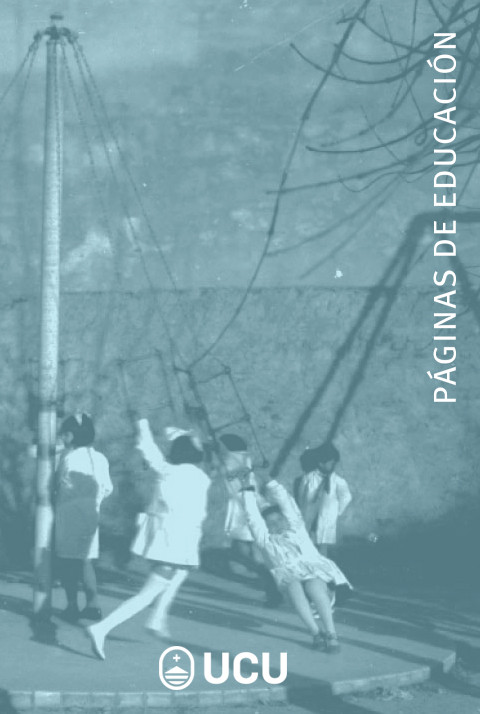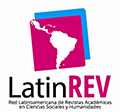Attitudes, Practices, and School Performance in Vulnerable Strata: A Comparison between Brazil and Argentina
DOI:
https://doi.org/10.22235/pe.v17i2.4009Keywords:
education, equity, performance, Brazil, ArgentinaAbstract
Since the 1960s, a vast array of studies has questioned the ability of schools to equalize learning levels among students from different social backgrounds. Despite various programs and policies aimed at reducing these disparities, research in diverse contexts has repeatedly found that not only do these differences persist, but they are also reproduced within the school system. This article approaches the issue from a slightly different perspective: its objective is to identify practices and attitudes of students and teachers that are associated with differences in school performance among students from lower socioeconomic backgrounds in Brazil and Argentina. The focus is not on understanding the mechanisms that perpetuate differences between social strata, but rather on identifying those that lead to higher relative achievements among students with fewer resources. A comparative analysis of the 2018 PISA test results was conducted using multivariate statistical models. This analysis revealed that certain factors, such as teacher empathy, student motivation and perseverance, and study methods, are associated with academic performance. However, it also showed that the strength of these associations varies depending on the context. These findings contribute to the design of educational policies aimed at improving performance in disadvantaged groups by highlighting conditions that may foster better outcomes, while also cautioning against uncritically extrapolating results across different contexts.
Downloads
References
Alexander, K., Entwisle, D., & Steffel Olson, L. (2007). Lasting consequences of the summer learning gap. American Sociological Review, 72(2), 167-80. https://doi.org/10.1177/000312240707200202
Banco Mundial. (s.f.). Brecha de pobreza a $2,15 por día (2017 PPA) (%). Brasil, Argentina. https://datos.bancomundial.org/indicador/SI.POV.GAPS?view=chart&locations=BR-AR
Bernstein, B. (1971). Class, codes and control. Routledge.
Blau, P. M., & Duncan, O. D. (1967). The American occupational structure. John Wiley and Sons.
Boudon, R. (1978). Educación e igualdad. Política, igualdad social y educación. MEC.
Bourdieu, P., & Passeron, J. C. (1979). La reproducción. Elementos para una teoría del sistema de enseñanza. Editorial Laia.
Brophy, J., & Good, T. (1970). Teacher's Communication of Differential Expectations for Children's Classroom Performance. Journal of Educational Psychology, 61, 365-374.
Cain, G., & Watts, H. (1968). Problems in making inferences from the Coleman Report. Office of Economic Opportunity.
Campbell, R., Kyriakides, L., Muijs, R., & Robinson, W. (2004). Effective teaching and values: Some implications for research and teacher appraisal. Oxford Review of Education, 30(4), 451-465. https://doi.org/10.1080/0305498042000303955
Coleman, J., Campbell, E., Hobson, C., Mcpartland, J., Mood, A., Alexander, M., Weinfeld, F., & York, R. (1966). Equality of educational opportunity. Office of Education; U.S. Department of Health; Education and Welfare.
D’Amico, J. (1982). The effective schools movement: studies, issues and approach. Research for Better Schools Inc.
Duncan, G., & Magnuson, K. (2011). The nature and impact of early achievement skills, attention skills, and behavior problems. En G. Duncan, R. Murnane (eds.), Whither Opportunity: Rising Inequality, Schools, and Children’s Life Chances (pp. 47-69). The Russell Sage Foundation.
Edmonds, R., Billingsley, A., Comer, J., Dyer, J., Hall, W., Bernard Hill, R., Mcgehee, N., Dunbar Reddick, L., Taylor, H., & Wright, S. (1973). A black response to Christopher Jencks's inequality and certain other issues. Harvard Educational Review, 43, 76-91.
Edmonds, R. (1979). Effective schools for the urban poor. Educational Leadership, 37, 15-24.
Fullan, M. (1991). The new meaning of educational change. Teachers’ College Press.
Guzmán, C. (2005). Reformas educativas en América Latina: Un análisis crítico. Revista Iberoamericana de Educación, 36(8), 1-11. https://doi.org/10.35362/rie3682779
Hayes, D., & Grether, J. (1983). The school year and vacations: When do students learn? Cornell Journal of Social Relations, 17, 56–71.
Heyns, B. (1978). Summer learning and the effects of schooling. Academic Press.
Jencks, C. (1972). Inequality: a reassessment of the effect of family and schooling in America. Basic Books.
Klibanoff, L., & Haggart, S. (1981). Summer growth and the effectiveness of summer school. Office of Program Evaluation.
Krüger, N. (2019). La segregación por nivel socioeconómico como dimensión de la exclusión educativa: 15 años de evolución en América Latina. Archivos Analíticos de Políticas Educativas, 27(8), 1-34. https://doi.org/10.14507/epaa.27.3577
Kyriakides, L., & Creemers, B. (2008). The effects of teacher factors on different outcomes: Two studies testing the validity of the dynamic model. Effective Education, 1(1), 61-85. https://doi.org/10.1080/19415530903043680
Kyriakides, L., Christoforou, C., & Charalambos, Y. (2013). What matters for student learning outcomes: A meta-analysis of studies exploring factors of effective teaching. Teaching and Teacher Education, 36, 143-152. https://doi.org/10.1016/j.tate.2013.07.010
Míguez, D. (2021). Leyes y Planes de Reforma Educativa en Argentina y Brasil. Comparaciones entre países y períodos a principios del siglo XXI. Revista Dilemas Contemporáneos: Educación, Política y Valores, 8(2), Artículo 34. https://doi.org/10.46377/dilemas.v8i2.2545
Meyer, H., & Benavot, A. (2013). PISA, power, and policy: the emergence of global educational governance. Symposium Books.
Murillo, J. (2003). La investigación sobre eficacia escolar en Iberoamérica. Revisión internacional del estado del arte. Centro de Investigación y Documentación Educativa.
Neufeld, B. (1983). A Review of Effective Schools Research: The Message for Secondary Schools. National Commission on Excellence in Education.
Organización para la Cooperación y el Desarrollo Económico. (2016). Sampling in Pisa. First Meeting of the PISA 2018 National Project Managers. Westat.
Organización para la Cooperación y el Desarrollo Económico. (2020). PISA 2018 technical report. https://www.oecd.org/pisa/data/pisa2018technicalreport/
Palermo, V. (2015) La alegría y la pasión. Relatos brasileños y argentinos en perspectiva comparada. Katz.
Pérez Centeno, C., & Leal, M. (2011). ¿Han funcionado las reformas educativas en América Latina? Un estudio de los casos de Argentina, Brasil y Chile. Archivos Analíticos de Políticas Educativas, 19(36), 1-22. https://doi.org/10.14507/epaa.v19n36.2011
Pousadela, I. (2007). Las políticas públicas y las matrices nacionales de cultura política. En A. Grimson (ed.), Pasiones Nacionales. Política y Cultura en Brasil y Argentina. (pp. 49-124). Edhasa.
Purkey, S., & Smith, M. (1982). Effective Schools. A Review. National Institute of Education.
Reardon, S. (2011). The widening academic achievement gap between the rich and the poor: New evidence and possible explanations. En G. Duncan, R. Murname, Whither Opportunity? Rising Inequality, Schools, and Children’s Life Chances (pp. 91-115). Russell Sage Foundation.
Reimers, F. (2000). ¿Pueden aprender los hijos de los pobres en las escuelas de América Latina? Revista Mexicana de Investigación Educativa, 5(9), 11-69. https://www.redalyc.org/articulo.oa?id=14000902
Reynols, D., Sammons, P., De Fraine, B., & Van Damme, J. (2014). Educational effectiveness research (EER): A state-of-the-art review. School Effectiveness and School Improvement, 25(2), 197-230. https://doi.org/10.1080/09243453.2014.885450
Sammons, P., & Bakkum, L. (2011). Effective schools, equity and teacher efficacy: A review of the literature. Profesorado. Revista de Currículum y Formación del Profesorado, 15(3), 9-26. https://revistaseug.ugr.es/index.php/profesorado/article/view/20405
Scheerens, J., Witziers, B., & Steen, R. (2013). Un metaanálisis de estudios de eficacia escolar. Revista de Educación, (361), 619-645. https://doi.org/10.4438/1988-592X-RE-2013-361-235
Sistema de Información de Tendencias Educativas en América Latina. (s.f.). Indicadores estadísticos. https://siteal.iiep.unesco.org/indicadores
Slavin, R. (1994). Effective classrooms, effective schools: A research base for Reform in Latin American education. En J. Puryear, J. Brunner (Orgs.), Education, equity and economic competitiveness in the Americas. An inter-American dialogue project (pp. 7-29). OEA.
Weber, G. (1971). Inner-city children can be taught to read: Four successful schools. Council for Basic Education.
Willis, P. (1988). Aprendiendo a trabajar. Cómo los chicos de la clase obrera consiguen trabajos de clase obrera. Akal.
Downloads
Published
How to Cite
Issue
Section
License
Copyright (c) 2024 Páginas de Educación

This work is licensed under a Creative Commons Attribution 4.0 International License.















